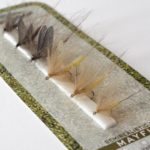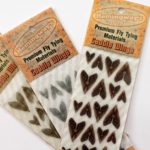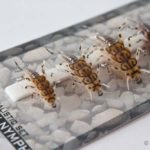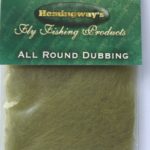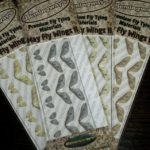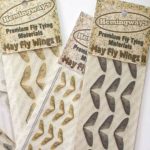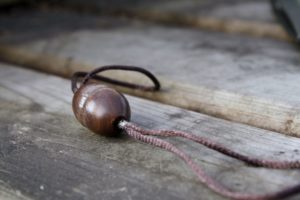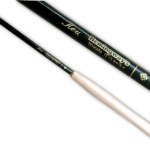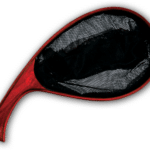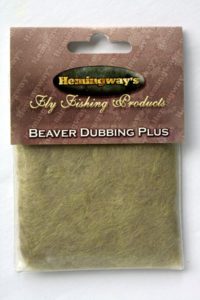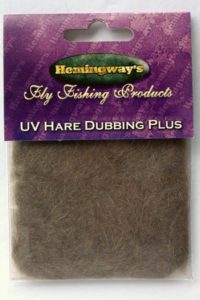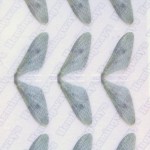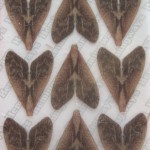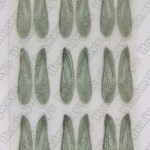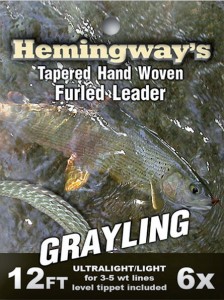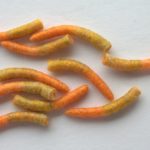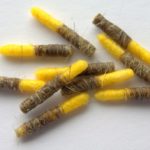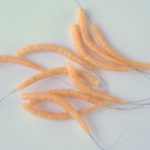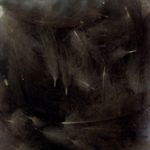“..yesss sa c un de mes meilleur..”
“Hello FrostyFly,
First, I would like to tell you that you have great products. There amazing. I have purchased them in the past and have just made another order a few minutes ago. I am going to pass your company name and info onto a local sports shop which is where I buy most of my tying supplies. I am sure that he will be impressed, as much as I am. It is great to see a Canadian company offering such good quality tying and fly fishing products. Keep up the good work.”
“…I received the package. Woooow. The shipping is very fast. Thank’s. The flies are beautiful. I am very happy with your products. It is of very good quality…”
“…tied a couple of green caddis flies with the middle olive all round dubbing. It took a little getting used to tying small flies since all I’ve been tying recently is big saltwater flies but your dubbing is really nice to work with and the color looks really natural, I can’t wait for the season to start so I can fish them.”
“Will assuredly be returning to shop with you folks. Fine stuff you carry indeed!”
“I love your Small Tenkara Landing Net!
Not only made with very good craftsmanship, but the curved Tenkara handle design allows for nestling in the hand and then allow then for a special, secure “flick” of the wrist to dip up trout (best is tail first; then the mouth is available better for fly removal).
Having literally 100’s of spring creeks here in Southern Wisconsin, USA, I have found that for large trout a net is not needed. Large trout have to be played well, until basically almost exhausted, and most often we here in spring-creek county “beach” them on a weed bed. And then we have to rest them and resuscitate them with a back-and-forth motion to get them to swim off safe and well.
But anglers most certainly need a net like your Small Tenkara Net for smaller trout (10-15 inches/25-40 cm), The size of trout we fly anglers catch the most.
For trout in this range (25-40 cm), we can enjoy their fight for a while, and then we can (because of tippet strengths today) and we must bring them in. But they still have some fight left in them, splash a lot, and are hard to get a hand on. And, most important, the angler can not grab them without hurting them (their internal organs). So a small net, with a shallow bag net will work best. And it will get a lot of service.
Your Small Tenkara Landing Net perfectly solves this problem for the size of trout that fly fishers catch most often. And the price is very reasonable, for the fine craftsmanship one gets.
Thanks for making/marketing/selling such a great net. I’m already telling friends about it!
Good Angling”
Dennis Franke
Dennis Franke Flyrods – Liteline Graphite Flyrod Designs
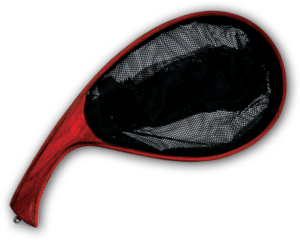
“The prosaic name gives this away, without that I have a couple of cord loops and a small wooden oval – pull on the loops and you find powerful wee magnets holding the halves firmly together. Loop one end to a net, the other to a ring on a jacket, bag, pack, waders or waistcoat. When you finally hook a fish which needs a net – pull firmly and the net comes free – deal with your trophy, then wave the net in the general direction of the loop when the magnetic half is attached and the two halves ‘thunk’ together.
I have a wooden framed net I wear on my back. One side of this holder loops to the D-ring on the back of my wading jacket, the other to the front lip of my net. The handle of my net is now conveniently at the small of my back; it’s easy to grab my net and almost as easy to put it back.
This comes from a small range of gear for tenkara fishing, so this looks lower tech, dark Padouk wood and soft cord, hiding the strong little rare-earth magnets which do the work.”
Review by Magnus Angus
Tackle Bag, Fly Fishing & Fly Tying Magazine (UK), June 2013
“…They produce a range of printed nymph backs and wing buds along with matching silicone rubber legs for tying semi-realistic stonefly nymphs. The backs and buds are pre cut from waterproof, UV resistant material with a self-adhesive backing, and come printed with realistic stonefly nymph colouration. The matching legs are molded from silicone rubber, soft enough to provide any resistance to the fish but still resilient enough to handle any rough and tumble of a mountain stream and the teeth of its occupants.
These components are available in three sizes – small, medium and large – and in a range of colors covering everything from pale yellow through to black.
For a simple semi-realistic nymph, start by adding some weight to the hook shank and laying down a base of thread; finish with a couple of turns of thread to form a small lump as this helps the goose biots splay out when tied down against it. Tie in the goose biots to represent the tail cerci and add a length of clear monofilament. Measure where your set of legs will sit and tie in the back end before dubbing the rear of the fly. Place a nymph back over the dubbing and rib over with the monofilament to hold it down: although the backing is self adhesive, in reality it is not strong enough to stay in place by itself.
Add a couple more biots, one either side of the hook to represent antennae, then the matching nymph bud is tied upside down and facing forward over the hook eye ready to be folded back later.
Dub a plump body and bring the legs forward underneath and tie off behind the hook eye. Finally the wing bud is folded back over the top and secured with several wraps behind the head section and first pair of legs, before a whip finish behind the second section and second pair of legs.
Printed body parts and rubber legs may not be everyone’s idea of traditional fly tying materials, but the end result is hard to argue with. At the very least you have a talking point when others sneak a peak into your fly box, and it gives you another useful option when the trout in your favourite stream refuses to play ball.”
Review by Peter Watson
Watson’s Fancy, Fly Life Magazine (AU), Issue 70, Summer 2013
Read the full article and Peter’s stonefly nymph recipe here.
Featured image © Copyright FlyLife Publishing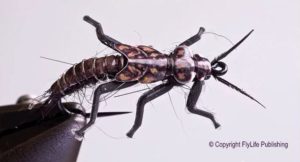
“This represents a pair of Hemingway’s outfits, more or less complete with rod, line, flies, net and sling/pack – all the essentials to get started with tenkara fishing. Faced with the pieces I found it very easy to join them into a useable fishing outfit. The rod is telescopic with a knotted nylon cord at the tip. Simply loop the ‘tapered leader’ to the butt of the cord, attach a tippet at the fine end, tie on a fly, and that’s it. Nothing unusual or unconventional, or, indeed, new. If you want to read a little of the history of this type of fly fishing in the UK, in fact in Scotland, I suggest you search the internet for the book, The Angler and the Loop-Rod by David Webster, I believe published in 1885 (Amazon lists an edition published in 2008).
This is a way of fishing which appeals to me. Way back when the fly-fishing bug had yet to bite me, one of the attractions of fly fishing was a sense of elegant, mobile simplicity. The fly fisher, walking and watching, occasionally flicking the water with a fly, while the bait fisher sits and waits and the spin fisher works his lure through the pool again and again. This was back before we had any need for fly reels with a dozen spare spools and tackle bags the size of Cumbria.
The line fitted to the long tenkara rod is not really a ‘tapered leader’. For sure it is tapered but it is much better described as the Casting Line – not a new term, ask Webster. Casting the tenkara outfit I am clearly casting conventionally. The rod loads and unloads against the line (incidentally, we can and do load, i.e. bend, a fly rod against its own inertia). As a compulsive hauler my non-rod hand really wants something to do while my right hand is casting, so this certainly feels different. My casting range is limited to the length of my line and rod – slightly over 7m with this outfit. I can use, actually fish, in quite a lot of river at that range. This rod is 3.3m long and not as soft as I expected, overhead casting is fine, I’d like a slightly longer line if I’m to be roll casting more. As I got used to this outfit, maybe I imagined it, but the simplicity seemed to bring a sense of calm; this gear gets rid of so many choices and variables I guess that is understandable.
…The net looks nice and the rod seems well made…”
Review by Magnus Angus
Tackle Bag, Fly Fishing & Fly Tying Magazine (UK), June 2013
Read the full article in pdf format here or online here.
“Frosty Dubbing all one type of fibre; curious stuff. Frosty looks translucent until you turn it and it seems to gleam. I guess this has a flashier side or angle to the fibre, but whatever it is that does it the effect is pleasing and prevents this becoming brash or harsh.
From the pack the fibres are a fairly long staple. That can twist onto a thread but it suits other dubbing methods more, which is fine in a loop or rolled into a noodle and caught in by the tip and twisted. For a shorter staple tear a pinch of Frosty Dubbing, the fibres can be ripped shorter – which creates more ends and more spike. A fairly fine soft synthetic dubbing, I’d use this for wet flies and streamers of one sort or another.”
Review by Magnus Angus
On the Bench, Fly Fishing & Fly Tying Magazine (UK), May 2013
Read the full article in pdf format here or online here.
“Beaver Dubbing Plus blends beaver with a “touch of superfine sparkling Antron”. Again, the main constituent in the mix is a natural under-fur. Beaver, like muskrat, has a very fine dense under-fur which does a fine job on dries. Personally, I think it’s the fine texture of the hair, which suits beaver to dries and small, sleek flies, more than its ability to float a fly. The fine Antron is well mixed into the blend, even a small tuft of dubbing has some in there. Again the natural under-fur binds the dubbing, holding the mix together. This dubs a tight, slim fly, I’d use it on smaller flies and of course on dries – but in my opinion it needs to be treated with a floatant.”
Review by Magnus Angus
On the Bench, Fly Fishing & Fly Tying Magazine (UK), May 2013
“Three quite different dubbings here – two blend, one pure synthetic – and all three seem like well prepared dubbings.
UV Hare Dubbing Plus blends hare with “fine sparking Antron and UV ice dubbing”. Actually, the pack says, “hare’s ear guard hairs” but this has a high proportion of under-fur in the mix and is certainly not from the ear of any type of hare I’ve handled.
The staple lengths vary, seems like the hare is shorter than the synthetics, I can see plenty guard fibre in the mix, which is being held together by under-fur. Very well blended, exceptionally easy to twist onto a thread. The fibres in this mix absorb water quickly so this is an obvious choice for nymphs and sub-surface flies, the range of colours listed on the pack fit that idea.”
Review by Magnus Angus
On the Bench, Fly Fishing & Fly Tying Magazine (UK), May 2013
“Wings? You want wings? We have wings! There are three types here: May Fly, Caddis and Stone Fly. All are made in the same way – a pre-cut shape on a backing sheet, all printed with details that suggest the natural wing. May Fly and Caddis come as pairs, Stone Fly as two separate wings. All have a matt surface facing out and gloss on the side in contact with the backing card.
These are made from tough stuff, too. I can stretch it until it breaks, and it’s difficult to cut with thread. These look like stiff wings but this is actually quite supple plastic. It’s difficult to explain what I’m getting at here, but the texture of this plastic seems to work well; they hold position or posture well but are ‘squashy’: easily gulped by a trout.
These are not just copies of wings the shapes have been thought out for tying. What I mean is I could simply tie over the narrow point where the May Fly wing pairs meet; I can but I don’t have to, because I can tie down the wee tabs on either side of that narrow strip. Similarly, both the Caddis and Stone Fly have short level stumps or stubs where I want to tie them in. Tying in the tabs and stumps takes a minute or two of practice, but it’s not hard and the wings are resilient so if they roll around or otherwise misbehave just remove the thread and start over.
I found sizing slightly problematic. I guess that comes from the styles of flies I tie and being more used to tying with natural materials. When I come to proportion a fly I work to the hook: the tail, body, wing and hackle are all sized using the hook as my reference. By contrast, these wings are precisely pre-cut and I’d rather not start butchering them, so do I have to find a hook the right size for the wing? I was sent medium-sized wings – the photograph shows a pair mounted on a #10 Fine Dry Fly G-Point. It looks big to my eye, and I regard #10 as a fairly large dry fly hook.
No, I don’t need bigger hooks. In fact, that approach really misses the point and purpose of these wings. Far from needing something bigger than that #10, I should probably use a smaller, or at least shorter hook, and fit a detached body. The point being, these materials come from a different mind-set and way of tying. Some of my old habits, using the hook as my reference adjusting proportions to suit, will have to go if I am going to get the most from these.
OK, so how do I size flies tied with these wings? How do I fit the parts together? I suppose I could get medium wings and medium detached bodies and just fit the two together – but again that misses the point. These are designed to be used with the insect, the natural bug, as the reference. If I know the rough length and colour of a dun’s body and the height of its wings I can fairly quickly choose a suitable detached tube body and wing pair.
Contrast that with our traditional methods of tying flies – give me the dressing notes for an Adam’s or a Lunn’s or a Kite’s Imperial and frankly I can tie a decent version of that artificial fly without having the least inkling what a natural fly looks like. If fact, we can take that further, so for example, flies like Greenwell’s Glory, have taken on a life of their own – the debate over the original tying and the challenge of finding that exact ‘real’ Greenwell cape, whatever that means. None of those debates or challenges, interesting though they might be, has the least hint of anything to do with entomology.
It strikes me that Hemingway’s wings and tube bodies (featured in a previous On the Bench) are part of a move away from that older type thinking and tying. Oh, and they make a pretty neat fishing fly, too!”
Review by Magnus Angus
On the Bench, Fly Fishing & Fly Tying Magazine (UK), 2013
Read the full article here.
“Hemingway’s Grayling leader uses fine monofilament nylon as the raw material. As with ‘laid’ ropes, once the furl is twisted together the ends need to be finished in some way to prevent them fraying. Hemingway’s has opted to loop both ends which does the job well and suits most fly fishers – it lets me loop onto the fly line and to my tippet.
So why use a furled leader? Why not simply use a single filament of tapered nylon? Well, suppleness certainly counts – a furled nylon leader is more supple than a simple tapered nylon leader.
Why use a tapered leader at all? Tapered leaders continue the job the taper at the tip of my fly line started. They make a smoother transition from thick, heavy line to fine, light tippet. Try casting a level fly line, no front taper, attached to a length of fine tippet, the loop forms in the fly line as normal but when the loop reaches the tip of the line it has nowhere to pass its momentum on to (thin tippet has insignificant mass) and the tip of the fly line kicks over – the tippet may straighten but more likely the tip of the fly-line will tug the tippet back so the leader lands in a tangled heap. Now try a fly line with a well designed front-taper and a tapered leader. The loop continues through the line, into the leader.
That’s the theory, and in practice it worked well with this leader. Listed as a grayling leader, I looped this to #5 and then #4 lines, and the Hemingway’s Furl seemed to me to prolong the loop and turn-over sweetly. This is a long leader (12ft) and I found myself a little hesitant about adding much more than 3ft of tippet but I’m sure as I got more confident with it I could cope with a longer tippet.
It is rather pleasing that this leader seemed to sit in the water surface more than on, where I would expect a mono taper to sit/float. I assume that was caused by the twisted surface of the furl. Mud sinkant sticks to the twisted nylon very easily indeed and took it though the surface film with ease. Although this leader turned over straight it does seem to want to relax into a slight zig-zag, I guess that’s because of the twisting but it is slight and, given I want a little slack between me and the fly, seemed very acceptable.
Furled leaders are initially expensive but with care they last, just replace the tippet regularly. Easily added or removed, casts well, fishes well.”
Review by Magnus Angus
On the Bench, Fly Fishing & Fly Tying Magazine (UK), 2013
Read the full article here.
“…Tube Body’s are made from long dubbing fibre wound around a mandrel (often a needle of some sort) cemented and removed from the former. These tubes are tough so they can withstand casting, how they stand up to a few fish chewing on them is down to the fish and a little luck.
On a short-shank or curved hook, with a little dubbing and a turn of two of CdC at the thorax, Tube Body’s make for quick tying and a near-realistic artificial fishing fly. The fibre used to make these seems to accept felt pen easily, so those of a realistic bent can shade and segment them easily enough. Tube Bodys are longer than thorax of the insects they are used to represent, so should be tied in at the desired length.
Looking at the Small Mayfly the taper and diameter of these is about right for medium sized up-winged flies. Large size Mayfly Tube Bodys are really aiming at Mayfly (E. danica) and Green Drake, so although useful for those hatches are less useful overall. Stimulator, Hopper, Caddis and the like all have applications – caddis, crickets, daddy longlegs, etc.
This type of pre-formed body has been about for some time and the result can be excellent…”
Review by Magnus Angus
On the Bench, Fly Fishing & Fly Tying Magazine (UK), 2013
Read the full article here.
“…Feathers from both packs seem to be in first class condition. Plume sizes vary from tiny and hardly useful to large (for CdC), larger than typical mallard CdC. The really tiny feathers mean there will be some waste from a pack, but not a lot. The vast majority of the feathers are of fly tying size.
Because these feathers have not visited a dye-bath they are fluffy and slightly oily – exactly the way CdC should be (those delicate barbules and natural oils are what make CdC float so washing, dyeing and even handling can damage CdC – natural is good!)
Given feather size, quality and quantity the pack price seems reasonable…”
Review by Magnus Angus
On the Bench, Fly Fishing & Fly Tying Magazine (UK), 2013
Read the full article here.

